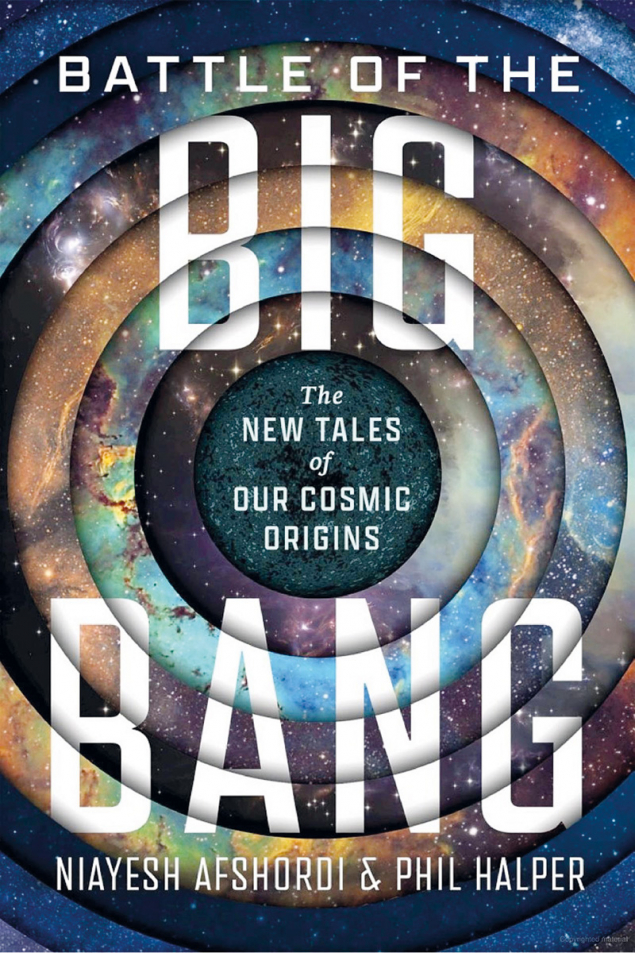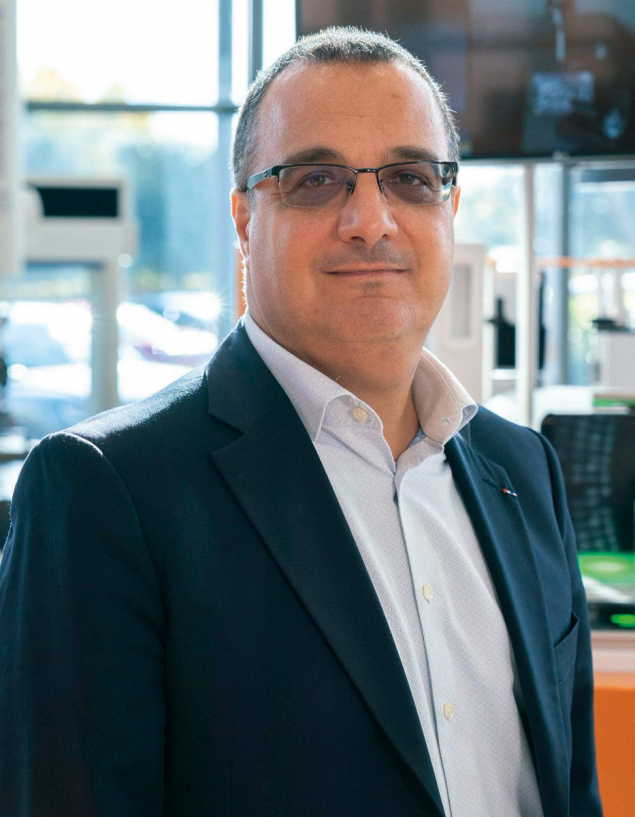As Arthur Koestler wrote in his seminal 1959 work The Sleepwalkers, “The history of cosmic theories … may without exaggeration be called a history of collective obsessions and controlled schizophrenias; and the manner in which some of the most important individual discoveries were arrived at, reminds one more of a sleepwalker’s performance than an electronic’s brain.” Koestler’s trenchant observation about the state of cosmology in the first half of the 20th century is perhaps even more true of cosmology in the first half of the 21st, and Battle of the Big Bang: The New Tales of Our Cosmic Origins provides an entertaining – and often refreshingly irreverent – update on the state of current collective obsessions and controlled schizophrenias in cosmology’s effort to understand the origin of the universe. The product of a collaboration between a working cosmologist (Afshordi) and a science communicator (Halper), Battle of the Big Bang tells the story of our modern efforts to comprehend the nature of the first moments of time, back to the moment of the Big Bang and even before.
Rogues’ gallery
The story told by the book combines lucid explanations of a rogues’ gallery of modern cosmological theories, some astonishingly successful, others less so, interspersed with anecdotes culled from Halper’s numerous interviews with key players in the game. These stories of the real people behind the theories add humanistic depth to the science, and the balance between Halper’s engaging storytelling and Afshordi’s steady-handed illumination of often esoteric scientific ideas is mostly a winning combination; the book is readable, without sacrificing too much scientific depth. In this respect, Battle of the Big Bang is reminiscent of Dennis Overbye’s 1991 Lonely Hearts of the Cosmos. As with Overbye’s account of the famous conference-banquet fist fight between Rocky Kolb and Gary Steigman, there is no shortage here of renowned scientists behaving like children, and the “mean girls of cosmology” angle makes for an entertaining read. The story of University of North Carolina professor Paul Frampton getting catfished by cocaine smugglers posing as model Denise Milani and ending up in an Argentine prison, for example, is not one you see coming.

A central conflict propelling the narrative is the longstanding feud between Andrei Linde and Alan Guth, both originators of the theory of cosmological inflation, and Paul Steinhardt, also an originator of the theory who later transformed into an apostate and bitter critic of the theory he helped establish.
Inflation – a hypothesised period of exponential cosmic expansion by more than 26 orders of magnitude that set the initial conditions for the hot Big Bang – is the gorilla in the room, a hugely successful theory that over the past several decades has racked up win after win when confronted by modern precision cosmology. Inflation is rightly considered by most cosmologists to be a central part of the “standard” cosmology, and its status as a leading theory inevitably makes it a target of critics like Steinhardt, who argue that inflation’s inherent flexibility means that it is not a scientific theory at all. Inflation is introduced early in the book, and for the remainder, Afshordi and Halper ably lead the reader through a wild mosaic of alternative theories to inflation: multiverses, bouncing universes, new universes birthed from within black holes, extra dimensions, varying light speed and “mirror” universes with reversed time all make appearances, a dizzying inventory of our most recent collective obsessions and schizophrenias.
In the later chapters, Afshordi describes some of his own efforts to formulate an alternative to inflation, and it is here that the book is at its strongest; the voice of a master of the craft confronting his own unconscious assumptions and biases makes for compelling reading. I have known Niayesh as a friend and colleague for more than 20 years. He is a fearlessly creative theorist with deep technical skill, but he has the heart of a rebel and a poet, and I found myself wishing that the book gave his unique voice more room to shine, instead of burying it beneath too many mundane pop-science tropes; the book could have used more of the science and less of the “science communication”. At times the pop-culture references come so thick that the reader feels as if he is having to shake them off his leg.
Compelling arguments
Anyone who reads science blogs or follows science on social media is aware of the voices, some of them from within mainstream science and many from further out on the fringe, arguing that modern theoretical physics suffers from a rigid orthodoxy that serves to crowd out worthy alternative ideas to understand problems such as dark matter, dark energy and the unification of gravity with quantum mechanics. This has been the subject of several books such as Lee Smolin’s The Trouble with Physics and Peter Woit’s Not Even Wrong. A real value in Battle of the Big Bang is to provide a compelling counterargument to that pessimistic narrative. In reality, ambitious scientists like nothing better than overturning a standard paradigm, and theorists have put the standard model of cosmology in the cross hairs with the gusto of assassins gunning for John Wick. Despite – or perhaps because of – its focus on conflict, this book ultimately paints a picture of a vital and healthy scientific process, a kind of controlled chaos, ripe with wild ideas, full of the clash of egos and littered with the ashes of failed shots at glory.
What the book is not is a reliable scholarly work on the history of science. Not only was the manuscript rather haphazardly copy-edited (the renowned Mount Palomar telescope, for example, is not “two hundred foot”, but in fact 200 inches), but the historical details are sometimes smoothed over to fit a coherent narrative rather than presented in their actual messy accuracy. While I do not doubt the anecdote of David Spergel saying “we’re dead”, referring to cosmic strings when data from the COBE satellite was first released, it was not COBE that killed cosmic strings. The blurry vision of COBE could accommodate either strings or inflation as the source of fluctuations in the cosmic microwave background (CMB), and it took a clearer view to make the distinction. The final nail in the coffin came from BOOMERanG nearly a decade later, with the observation of the second acoustic peak in the CMB. And it was not, as claimed here, BOOMERanG that provided the first evidence for a flat geometry to the cosmos; that happened a few years earlier, with the Saskatoon and CAT experiments.
Afshordi and Halper ably lead the reader through a wild mosaic of alternative theories to inflation
The book makes a point of the premature death of Dave Wilkinson, when in fact he died at age 67, not (as is implied in the text) in his 50s. Wilkinson – who was my freshman physics professor – was a great scientist and a gifted teacher, and it is appropriate to memorialise him, but he had a long and productive career.
Besides these points of detail, there are some more significant omissions. The book relates the story of how the Ukrainian physicist Alex Vilenkin, blacklisted from physics and working as a zookeeper in Kharkiv, escaped the Soviet Union. Vilenkin moved to SUNY Buffalo, where I am currently a professor, because he had mistaken Mendel Sachs, a condensed matter theorist, for Ray Sachs, who originally predicted fluctuations in the CMB. It’s a funny story, and although the authors note that Vilenkin was blacklisted for refusing to be an informant for the KGB, they omit the central context that he was Jewish, one of many Jews banished from academic life by Soviet authorities who escaped the stifling anti-Semitism of the Soviet Union for scientific freedom in the West. This history resonates today in light of efforts by some scientists to boycott Israeli institutes and even blacklist Israeli colleagues. Unlike the minutiae of CMB physics, this matters, and Battle of the Big Bang should have been more careful to tell the whole story.






